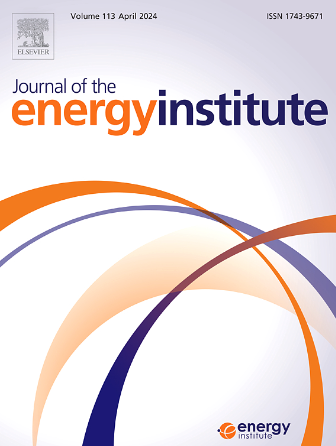Production of green phenol by microwave-assisted catalytic pyrolysis of epoxy-based carbon fiber reinforced plastic from wind turbine blades
IF 5.6
2区 工程技术
Q2 ENERGY & FUELS
引用次数: 0
Abstract
Recycling the waste wind turbine blades (WWTBs) is one of the key issues for the sustainable development of wind energy. Microwave-assisted catalytic pyrolysis offers the potential to obtain valuable products from the WWTBs. In this study, epoxy-based carbon fiber reinforced plastic (CFRP) from wind turbine blades was performed to microwave-assisted catalytic pyrolysis for phenol production. Four zeolite catalysts (ZSM-5, β30, MOR, and MCM-41) were characterized and used for pyrolysis. The solid, liquid, and gaseous products were collected respectively. The compositions of the condensed tar and non-condensed gas were carefully analyzed by GC-MS and GC, respectively. The performance of the catalysts was compared and the effects of microwave power and reactor temperature on the product characteristics were discussed. The results indicate that the conversion of the phenol precursors, including diphenol A, 4-isopropenyl phenol, 4-isopropyl phenol, and 4-allylphenol, to phenol is promoted by the catalysts. β30 shows the best performance for phenol production among the catalysts, benefiting from its high specific surface area and acidity. Increasing the microwave power from 500 W to 800 W favors the initial pyrolysis of epoxy resin, thus improving the phenol yield. 600 W is preferred due to excessively increasing microwave power has a limited effect on promoting phenol generation and has the potential to damage the carbon fibers. Increasing the temperature from 350 °C to 650 °C promotes the cracking of resin and intermediate products. Pyrolysis at 450 °C is preferred due to the highest phenol yield. With the suggested condition (β30, 600 W, and 450 °C), the phenol yield is ∼36.28 % in the tar. The findings of this study provide fundamental information and guidance for the industrial application of directed synthesis of phenol from WWTBs.
求助全文
约1分钟内获得全文
求助全文
来源期刊

Journal of The Energy Institute
工程技术-能源与燃料
CiteScore
10.60
自引率
5.30%
发文量
166
审稿时长
16 days
期刊介绍:
The Journal of the Energy Institute provides peer reviewed coverage of original high quality research on energy, engineering and technology.The coverage is broad and the main areas of interest include:
Combustion engineering and associated technologies; process heating; power generation; engines and propulsion; emissions and environmental pollution control; clean coal technologies; carbon abatement technologies
Emissions and environmental pollution control; safety and hazards;
Clean coal technologies; carbon abatement technologies, including carbon capture and storage, CCS;
Petroleum engineering and fuel quality, including storage and transport
Alternative energy sources; biomass utilisation and biomass conversion technologies; energy from waste, incineration and recycling
Energy conversion, energy recovery and energy efficiency; space heating, fuel cells, heat pumps and cooling systems
Energy storage
The journal''s coverage reflects changes in energy technology that result from the transition to more efficient energy production and end use together with reduced carbon emission.
 求助内容:
求助内容: 应助结果提醒方式:
应助结果提醒方式:


